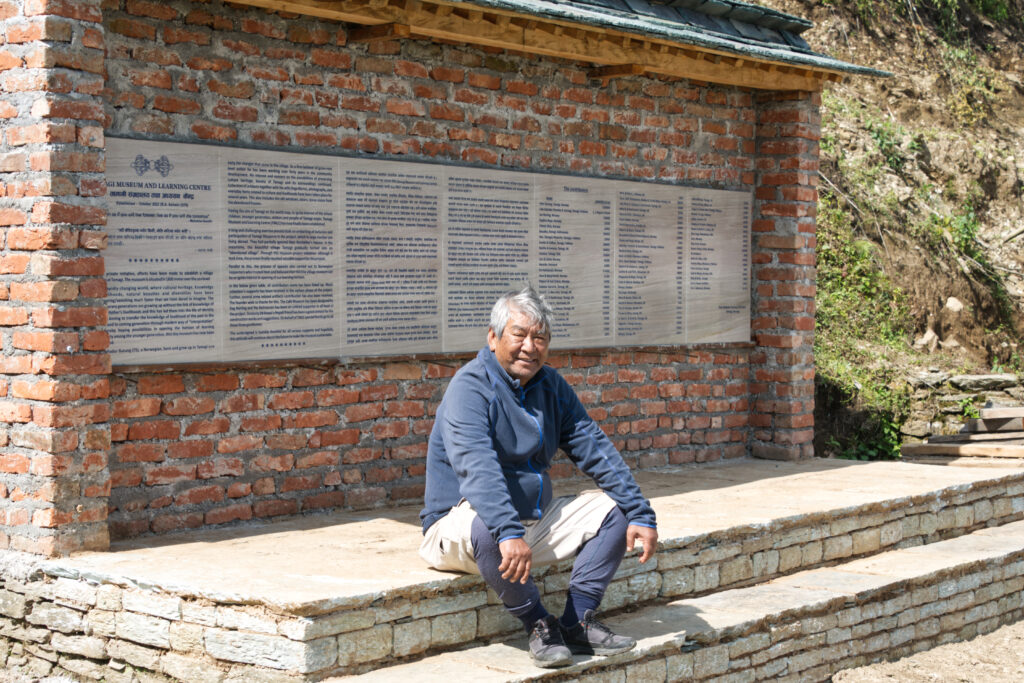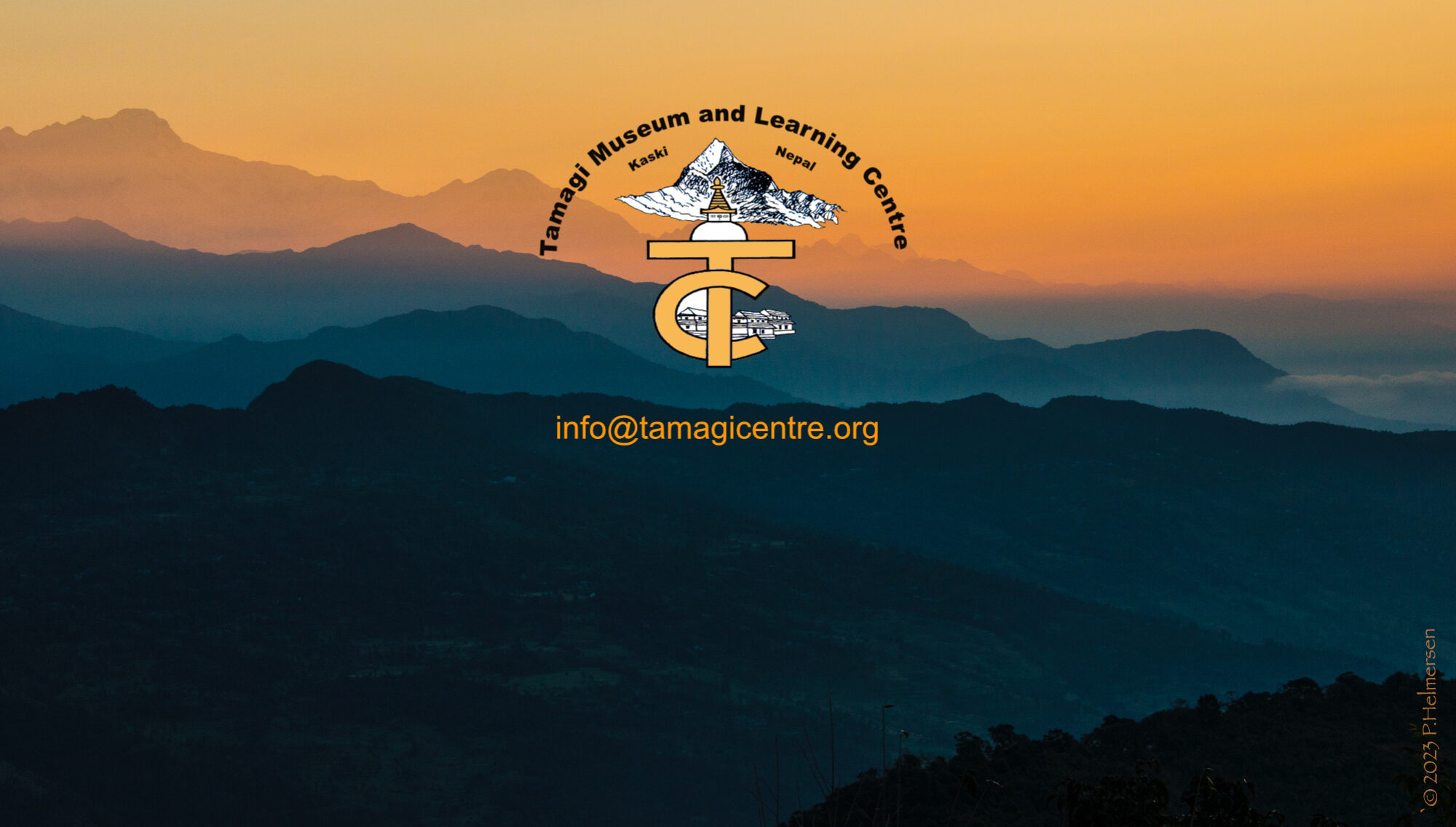(Click on photo to access video)
After numerous delays due to the pandemic and illness, work on the TMLC and its surroundings is accelerating with a realistic goal of a soft-opening in April next year. Prior to the arrival of the project team from Norway in October and during our 4-week stay in Tamagi we are pleased and excited to highlight the following accomplishments. Until our next scheduled visit in March 2023, your comments and suggestions are appreciated!
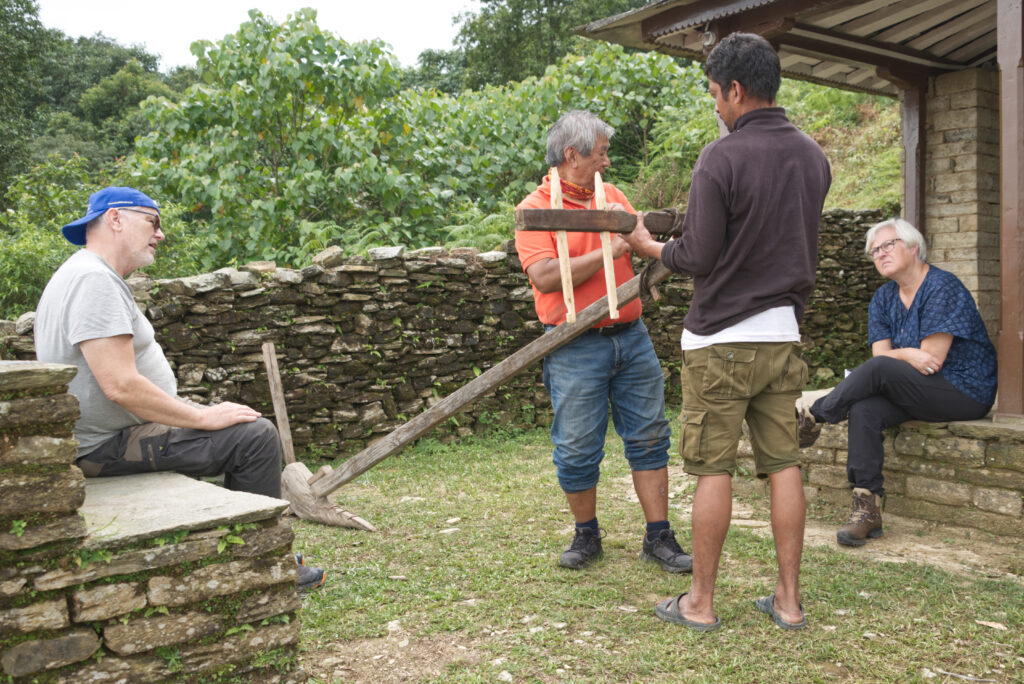
The project team now includes two Norwegian museologists who we were fortunate to meet during our visit to The Midt-Troms Museum in Norway’s arctic region three years ago. Ms Ellen Width, a senior adviser with experience from similar initiatives in Norway and Russia, and Mr Arild Endal, a biologist specialising in plant physiology, have been instrumental in the design and construction of the TMLC exhibits. In addition, Mr Narendra Lama has been recruited to oversee ongoing construction and future operations of TMLC.
Initially, three exhibits will be unveiled in the main museum building and adjoining cafe area early next year: livelihood, local impact of Gurkha recruitment and development/change at village level. Supervised by Narendra locally and Ellen and Arild remotely, design, sourcing and production are in progress.
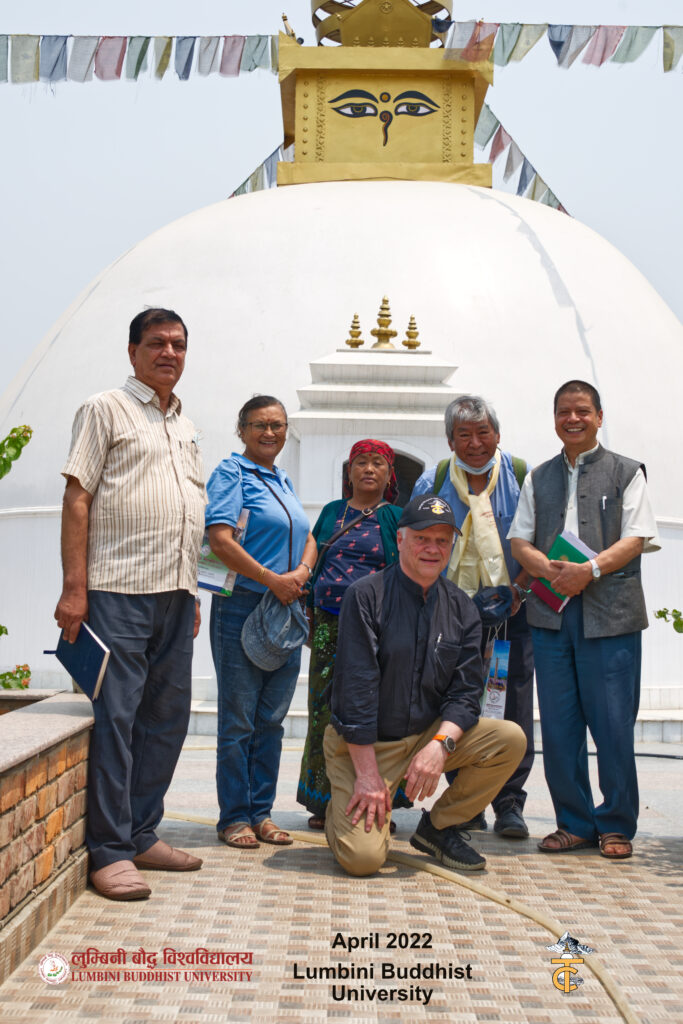
TMLC has actively sought out partners from Nepal’s academic community who have expressed interest in the preservation of our cultural heritage. Following up on this, Hem, Per and Dr. Sumitra M. Gurung were invited to Lumbini Buddhist University to explore areas of shared interest in April this year. In October this was followed up by a very fruitful meeting with LBU Vice-Chancellor Professor Hridaya Ratna Bajracharya in Tamagi. The following week the project team attended a workshop organised by LBU in Kathmandu where we were introduced to faculty members, notably LBU’s MA Museum & Gallery Practices staff Lecturer Swosti Rajbhandari Kayastha and Program Coordinator Karna Bahadur Maharjan. These discussions underscored our shared interests and commitments and resulted in a LOI (Letter of Intent) outlining collaboration in various ares within LBU’s MA programme in museology incl. provision of laboratory facilities for research and training of students in Tamagi.
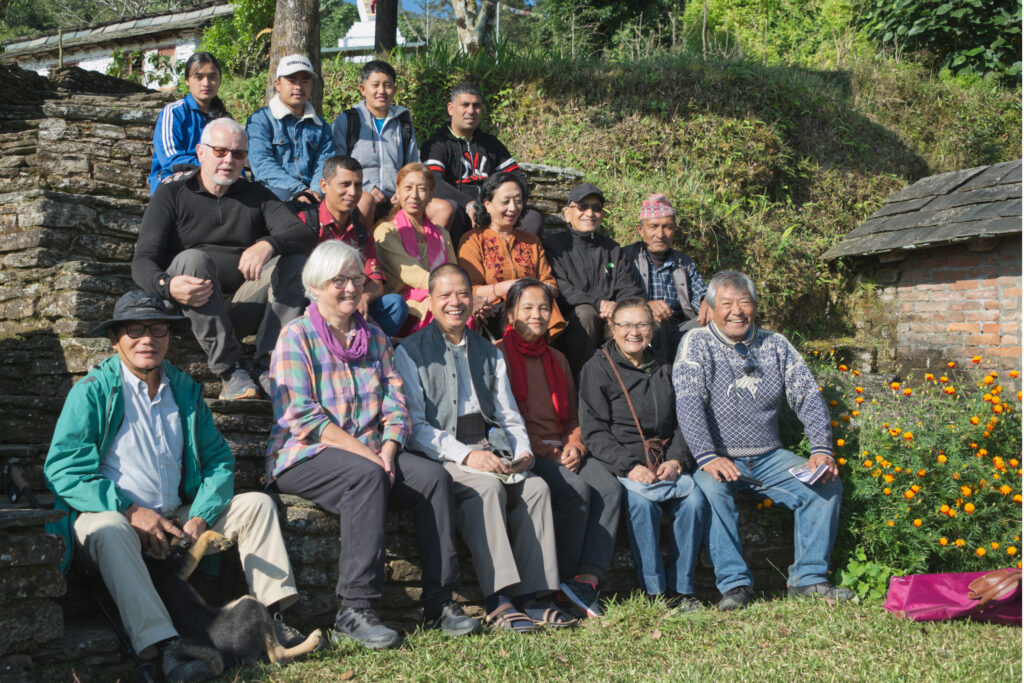
Significant progress has also been made on museum infrastructure in Tamagi. The office/storage annex next to the museum is nearing completion. Internet/Wi-Fi has been installed with coverage in the entire museum area. Initially, a diesel generator supplies power for construction and lighting, but sourcing of solar panels is ongoing. In addition, poles have recently been erected in the area and it is anticipated that Tamagi will once again be linked to the national power grid.
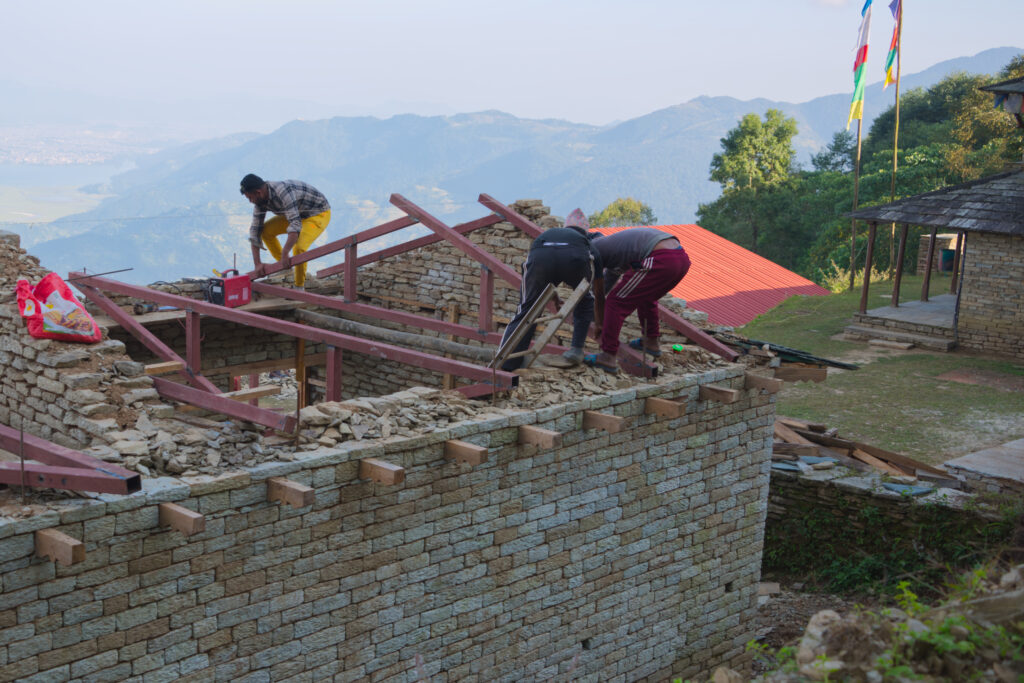
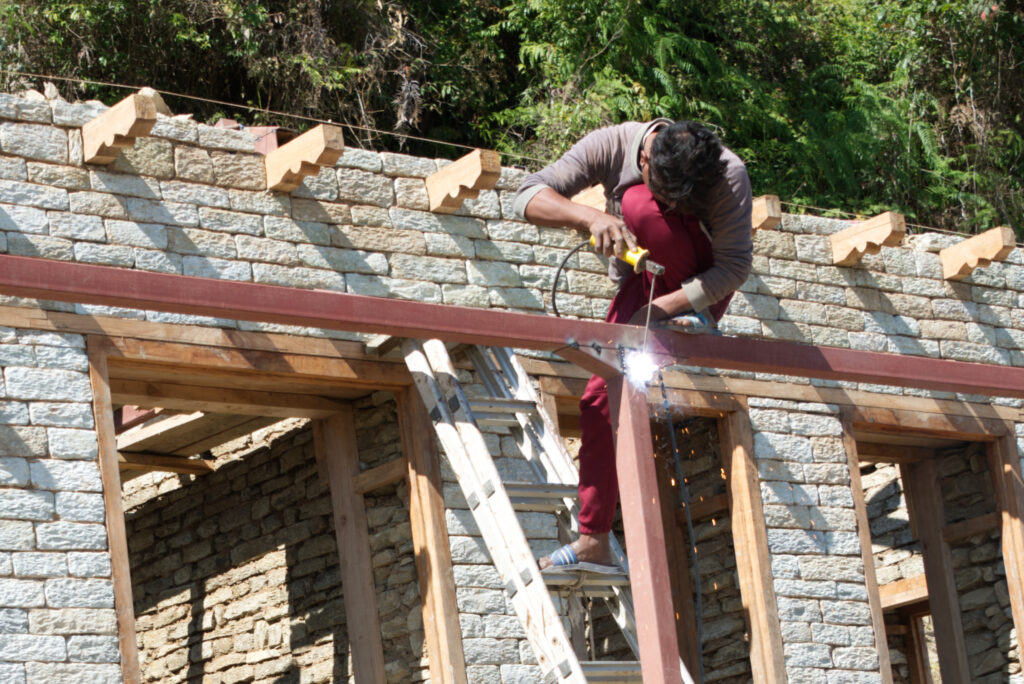
Finishing touches on the teahouse have been completed making it suitable for not only visitors’ meals but also exhibits, seminars and hands-on demonstrations of arts and crafts. Since this is an open air facility, curtains have been added for special events such as seminars and video screenings. Work on staff quarters is ongoing with scheduled completion early 2023.
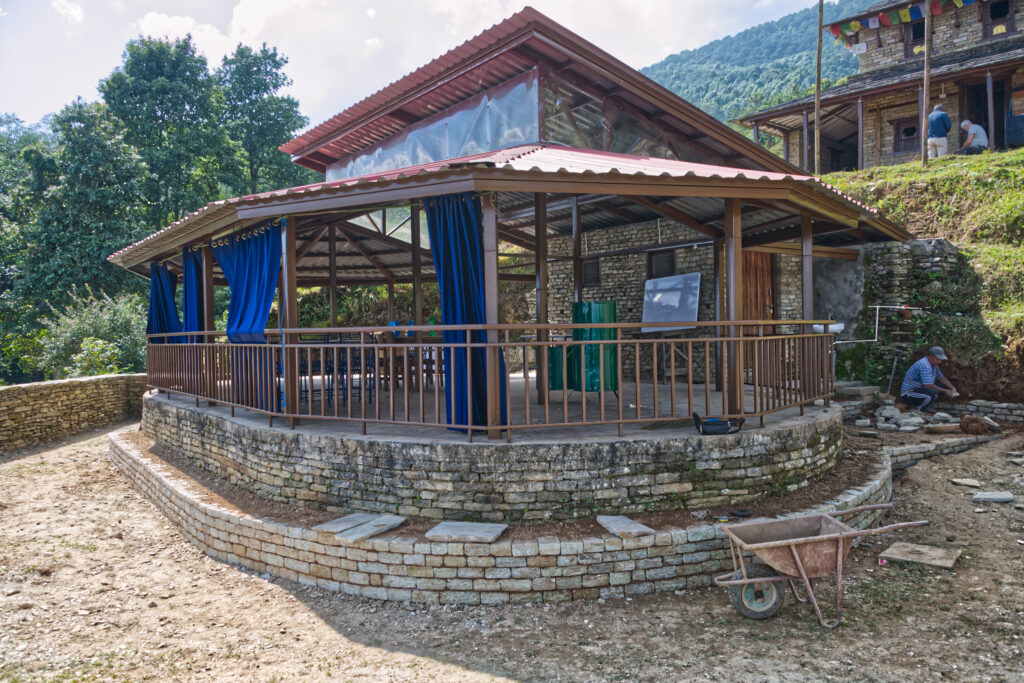
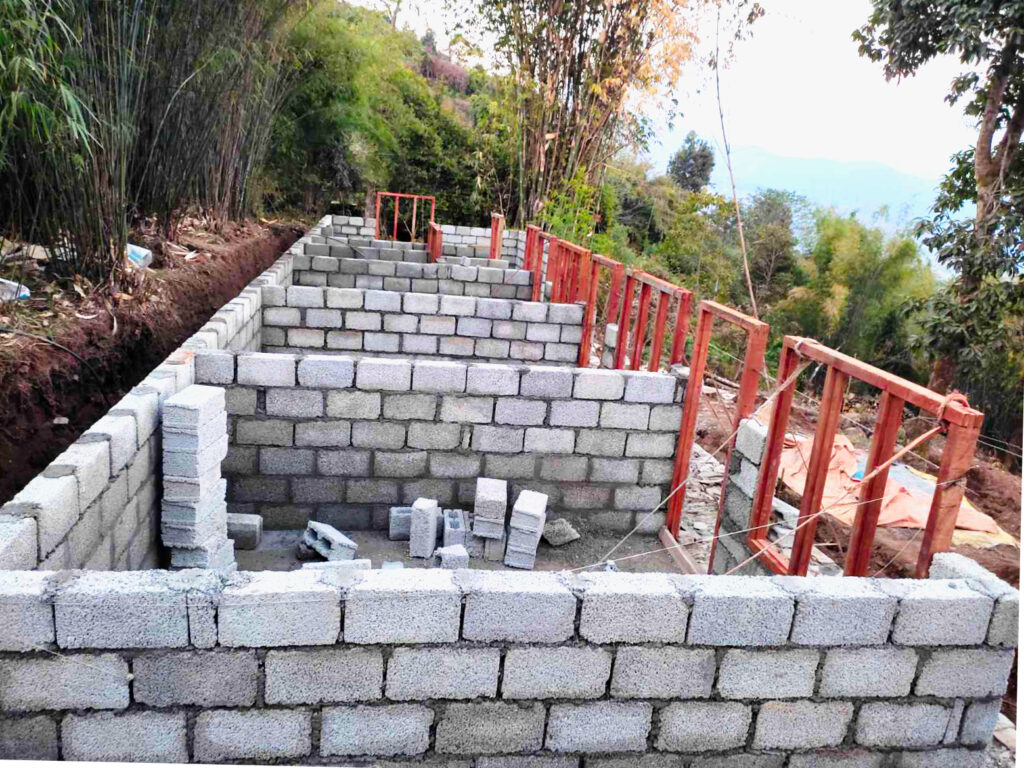
The TMLC site is expanding to include points of interest within walking distance. Farming terraces located 100 metres from the main museum building have been prepared . Traditional farming practices such as intercropping, crop rotation, cover cropping and organic composting will be demonstrated in this area in the appropriate seasons. This area will be an integral part of TMLC’s livelihood focus, offering visitors displays and demonstrations of traditional agricultural products and practices.
In addition, a short satellite excursion route in the Tamagi area has been mapped out. Displays at selected locations (e.g. shrines, landscape vistas, botanical points of interest, etc.) will be erected in March 2023.
(Click on photo to access video)
In order to gain a basic understanding of local youth (one of TMLC’s main target groups), the team scheduled a visit to neighbouring Bahadure Secondary School (grade 9 and upward). Interaction with students and teachers gave team members a more ‘grounded’ understanding of schools’ curriculum and student engagement with their cultural heritage.
Finally, to familiarise team members with similar initiatives in Nepal, visits to several museums in and around Pokhara including The Gurkha Museum at British Camp in Pokhara, International Mountaineering Museum and The Regional Museum of Gandaki Province were scheduled. Of special interest was the Himalayan Cottage and Museum in the Gurung village of Tanchowk displaying a collection of artifacts from this and surrounding villages. The owner of the Tanchowk museum has expressed interest in collaboration with the TMLC/LBU project.
